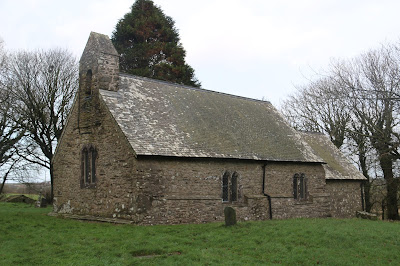| The next church, which was not on the Saints and Stones trail, was St Teilo's at Llandeloy. Unfortunately, we were to be disappointed at a number of levels. It was closed, with no indication of how to contact any keyholder and with a graveyard that had few, and no recent, burials. The church dates from the 12th century and by the 1820s was in ruins. It was rebuilt in the 1920s following Arts and Crafts principles, using the simplest available local materials and not copying the style of any particular period. It was finally closed in 2002 and then taken into the care of the rather poignantly named Friends of Friendless Churches. I've heard of the Society for the Protection of Ancient Buildings and the Churches Conservation Trust but not the FFC. Apparently they take on the care of churches that no-one else wants. How sad it must be to be a Friendless Church. I'm not sure what it says about the surrounding community. |

















No comments:
Post a Comment